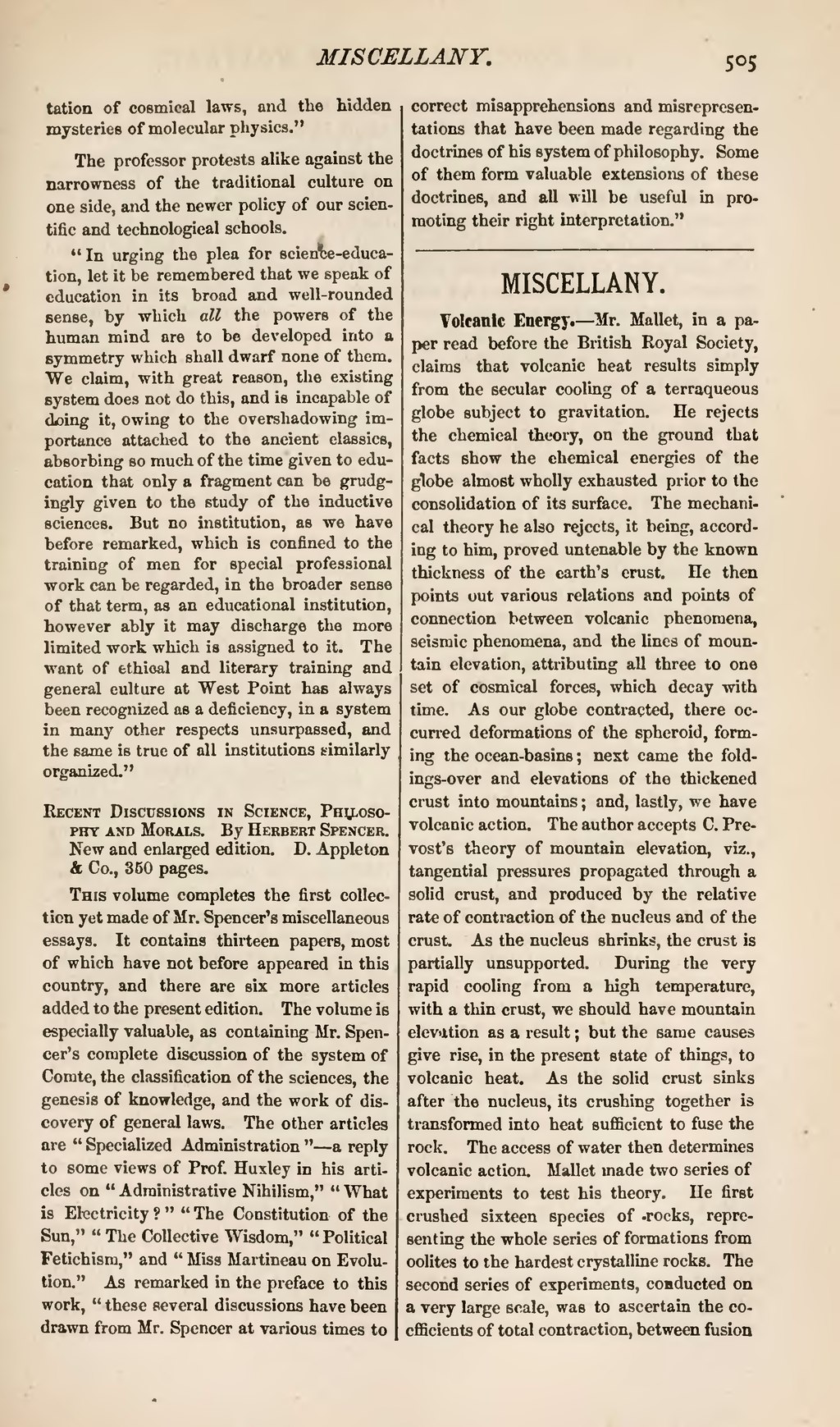tation of cosmical laws, and the hidden mysteries of molecular physics."
The professor protests alike against the narrowness of the traditional culture on one side, and the newer policy of our scientific and technological schools.
"In urging the plea for science-education, let it be remembered that we speak of education in its broad and well-rounded sense, by which all the powers of the human mind are to be developed into a symmetry which shall dwarf none of them. We claim, with great reason, the existing system does not do this, and is incapable of doing it, owing to the overshadowing importance attached to the ancient classics, absorbing so much of the time given to education that only a fragment can be grudgingly given to the study of the inductive sciences. But no institution, as we have before remarked, which is confined to the training of men for special professional work can be regarded, in the broader sense of that term, as an educational institution, however ably it may discharge the more limited work which is assigned to it. The want of ethical and literary training and general culture at West Point has always been recognized as a deficiency, in a system in many other respects unsurpassed, and the same is true of all institutions similarly organized."
Recent Discussions in Science, Philosophy and Morals. By Herbert Spencer. New and enlarged edition. D. Appleton & Co., 350 pages.
This volume completes the first collection yet made of Mr. Spencer's miscellaneous essays. It contains thirteen papers, most of which have not before appeared in this country, and there are sis more articles added to the present edition. The volume is especially valuable, as containing Mr. Spencer's complete discussion of the system of Comte, the classification of the sciences, the genesis of knowledge, and the work of discovery of general laws. The other articles are "Specialized Administration"—a reply to some views of Prof. Huxley in his articles on "Administrative Nihilism," "What is Electricity?" "The Constitution of the Sun," "The Collective Wisdom," "Political Fetichism," and "Miss Martineau on Evolution." As remarked in the preface to this work, "these several discussions have been drawn from Mr. Spencer at various times to correct misapprehensions and misrepresentations that have been made regarding the doctrines of his system of philosophy. Some of them form valuable extensions of these doctrines, and all will be useful in promoting their right interpretation."
MISCELLANY.
Volcanic Energy.—Mr. Mallet, in a paper read before the British Royal Society, claims that volcanic heat results simply from the secular cooling of a terraqueous globe subject to gravitation. He rejects the chemical theory, on the ground that facts show the chemical energies of the globe almost wholly exhausted prior to the consolidation of its surface. The mechanical theory he also rejects, it being, according to him, proved untenable by the known thickness of the earth's crust. He then points out various relations and points of connection between volcanic phenomena, seismic phenomena, and the lines of mountain elevation, attributing all three to one set of cosmical forces, which decay with time. As our globe contracted, there occurred deformations of the spheroid, forming the ocean-basins; next came the foldings-over and elevations of the thickened crust into mountains; and, lastly, we have volcanic action. The author accepts C. Prevost's theory of mountain elevation, viz., tangential pressures propagated through a solid crust, and produced by the relative rate of contraction of the nucleus and of the crust. As the nucleus shrinks, the crust is partially unsupported. During the very rapid cooling from a high temperature, with a thin crust, we should have mountain elevation as a result; but the same causes give rise, in the present state of things, to volcanic heat. As the solid crust sinks after the nucleus, its crushing together is transformed into heat sufficient to fuse the rock. The access of water then determines volcanic action. Mallet made two series of experiments to test his theory. He first crushed sixteen species of rocks, representing the whole series of formations from oolites to the hardest crystalline rocks. The second series of experiments, conducted on a very large scale, was to ascertain the coefficients of total contraction, between fusion

